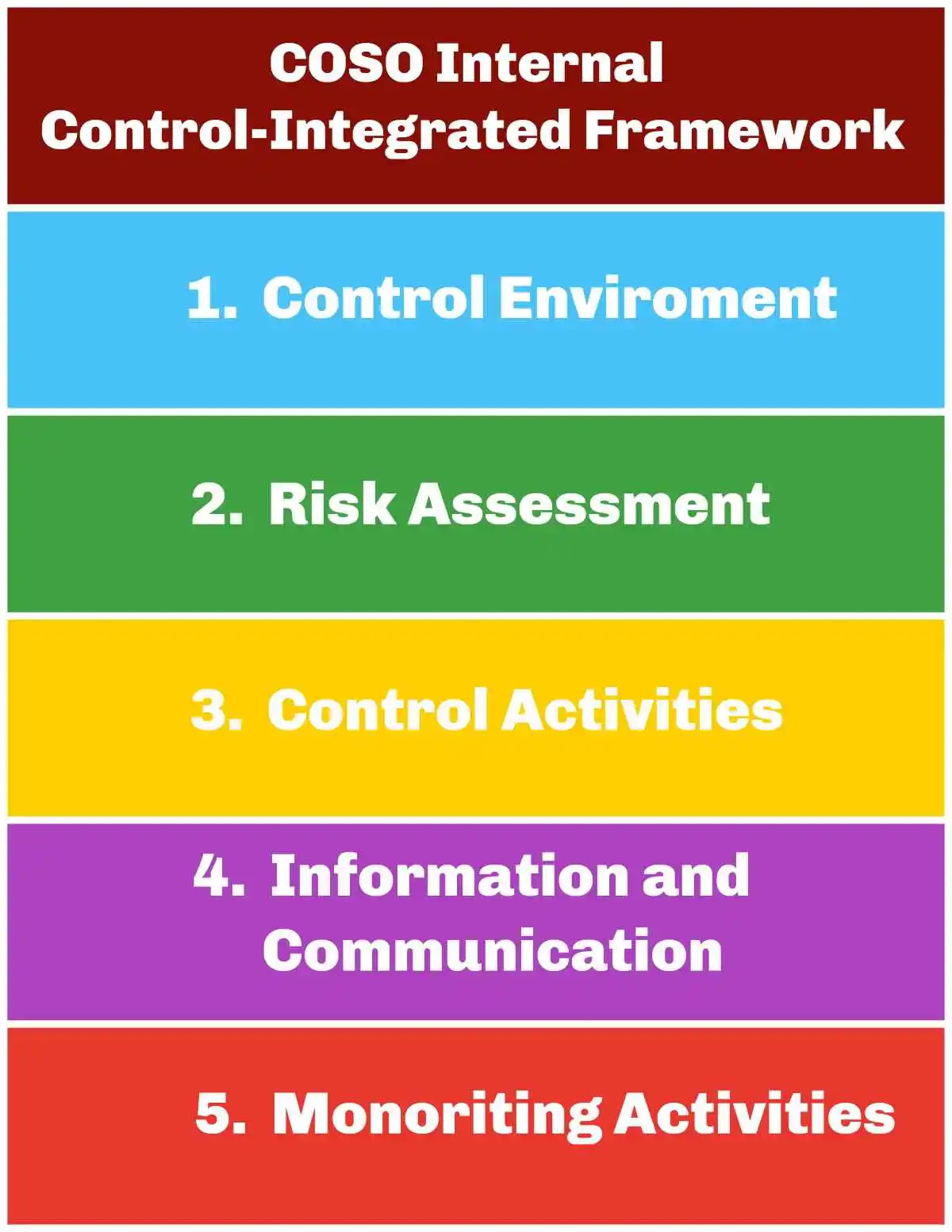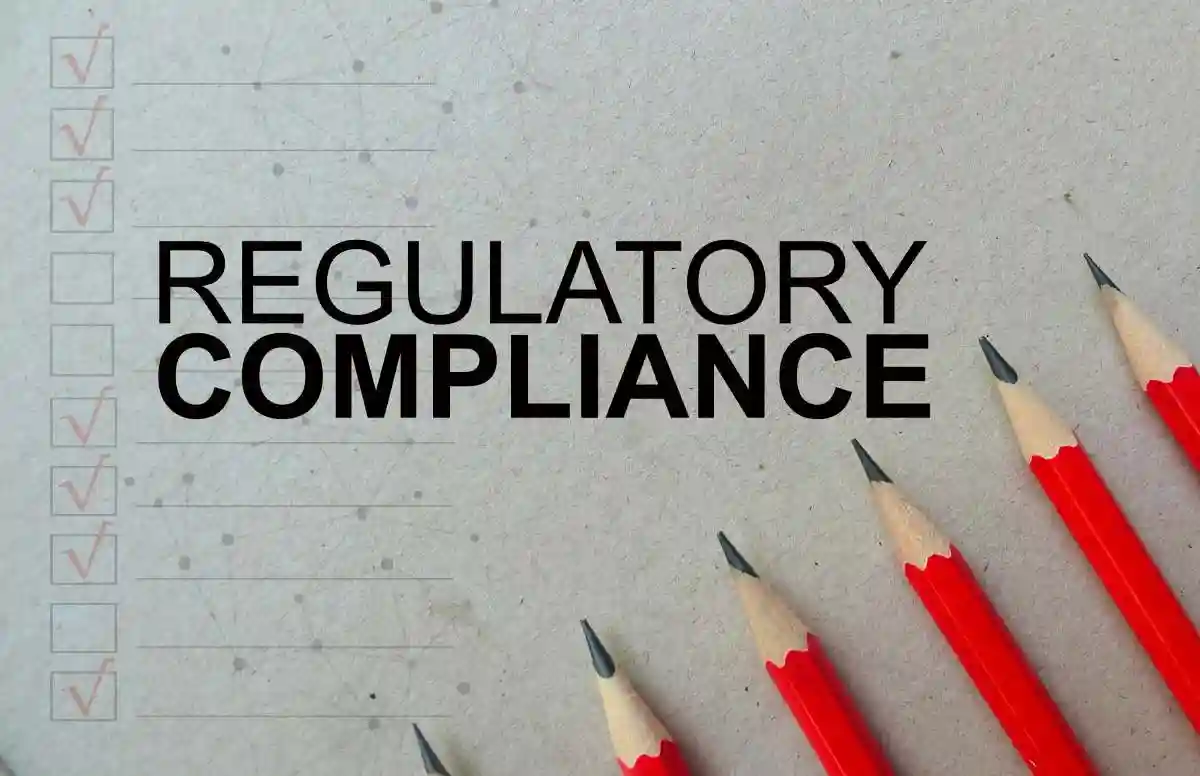Introduction to Improper Financial Reporting
- Improper Financial Reporting represents one of the most significant catalysts for securities litigation in today’s regulatory environment. Securities class actions filed in federal court demonstrated a 10% increase in 2013 compared to the previous year, establishing a pattern of escalating legal challenges that continues to reshape corporate accountability.
- The financial consequences prove devastating. The average settlement amount for federal securities class actions reached $68 million in 2013, with one “mega” settlement totaling $2.4 billion. These figures underscore the catastrophic financial exposure companies face when their reporting practices trigger regulatory scrutiny and investor litigation.
- Accounting irregularities and financial statement fraud serve as the foundation for most securities class action lawsuits. Corporate restatements increased from 65 in 2009 to 108 in 2011 among New York Stock Exchange companies, despite an overall decline since 2006. The Securities and Exchange Commission has intensified its enforcement focus on accounting fraud, creating heightened attention from class-action plaintiffs and federal courts regarding corporate restatements.
- Market manipulation has expanded across multiple domains, now encompassing commodities, securities, cryptocurrency, and FinTech sectors. Electronic communication and connectivity have enabled increasingly sophisticated manipulative schemes, while financial technologies challenge whether existing countermeasures remain adequate. The SEC provides specific guidance on Key Performance Indicators (KPIs) and non-GAAP metrics through regular comment letters to public companies.
- Financial reporting irregularities frequently become the centerpiece of securities fraud claims. Plaintiffs typically allege that companies create materially misleading impressions by disclosing favorable metrics while omitting more relevant but unfavorable data. The Twitter case exemplified this dynamic, where the court recognized that both Daily Active Users (DAU) and Monthly Active Users (MAU) were critical business metrics, and executives would have known about adverse DAU trends when making positive statements about MAU performance.
- Understanding these litigation triggers has become essential for corporate leaders, investors, and financial professionals operating in 2025’s enforcement landscape. The various forms of financial manipulation that commonly result in securities litigation create predictable legal exposures that sophisticated compliance programs must address proactively.

Omission of Key Metrics in Financial Disclosures
- Selective disclosure represents one of the most insidious forms of financial statement fraud, where companies deliberately reveal favorable metrics while concealing data that would present a less attractive investment narrative.
- This practice creates precisely the type of misleading impression that triggers securities class action lawsuits and substantial investor losses.
1. MAU vs DAU in Social Media Reporting
- Social media platforms have developed sophisticated methods for highlighting Monthly Active Users (MAU) while systematically omitting Daily Active Users (DAU) data that would reveal declining engagement patterns. The landmark case Shenwick v. Twitter established critical precedents for how courts evaluate these omissions in financial statements.
- Twitter executives promoted the “acceleration” and “turnaround” of MAU metrics without disclosing flat or declining DAU trends. The legal theory proved compelling: plaintiffs argued that “MAU was unhelpful at best and misleading at worst in the absence of companion DAU” data. While the court determined Twitter had no independent duty to disclose DAU, it found plaintiffs stated a viable claim that undisclosed DAU trends rendered MAU growth projections fundamentally implausible.
- The financial consequences proved devastating. Twitter’s selective disclosure strategy ultimately resulted in an approximately $800 million settlement, demonstrating how omissions in financial statements can trigger massive securities litigation exposure.
- The court’s reasoning highlighted a crucial principle: executives possessed actual knowledge of adverse DAU trends while making positive statements about MAU performance. This created exactly the type of misleading impression that securities fraud statutes are designed to prevent.
2. ARPU vs ARPPU in Gaming Platforms
- Gaming platform metrics present another area where selective disclosure creates substantial litigation risk. Average Revenue Per User (ARPU) versus Average Revenue Per Paying User (ARPPU) distinctions become particularly critical when only a small percentage of users generate actual revenue.
- Jedrzejczyk v. Skillz Inc. tested whether companies must disclose ARPPU when reporting ARPU figures. Plaintiffs alleged defendants concealed declining ARPPU by “focusing primarily on reporting the platform’s MAU,” creating the false impression that user acquisition drove revenue growth when MAU represented “really just a vanity metric”.
- The court rejected this claim, establishing an important legal boundary. Skillz was “not obligated to disclose any and all metrics relevant to its business—just those that if omitted, would create an impression of a state of affairs that differs in a material way from the one that actually exists“. The court distinguished this case from Twitter by finding that ARPPU and MAU were “not contingent: a negative trend in one does not ipso facto negate a positive trend in the other”.
- This distinction matters significantly for gaming companies where paying users represent only a small fraction of the overall user base. ARPPU measures actual revenue generation by isolating the valuable customer segments that drive business performance.
3. Revenue recognition fraud through selective metric use
- Selective metric disclosure frequently serves as the foundation for more sophisticated revenue recognition schemes. The Committee of Sponsoring Organizations of the Treadway Commission (COSO) found that improper revenue recognition accounted for 61% of fraudulent financial reporting cases investigated by the SEC.
- The two most dangerous schemes involved fictitious sales/revenue and timing manipulations, which together represented 83% of revenue recognition fraud investigated by federal regulators. Recent academic research published in the Review of Accounting Studies estimates that 41% of companies misrepresent their financial reports.

Revenue manipulation creates multiple layers of investor harm:
- Management compensation structures tied to revenue metrics create powerful incentives for manipulation. The professional judgment required by revenue recognition standards creates inherent opportunities for bias and fraudulent misrepresentation. Most critically, these schemes misrepresent EBITDA and other profitability ratios that sophisticated investors rely upon when making investment decisions.
- Advanced detection methods have emerged to identify suspicious revenue patterns. The MUP (managing revenue up) metric identifies companies whose quarterly Google Trends search volume ranked in the bottom quartile while reported revenue growth ranked in the top quartile—these companies demonstrated 165% higher odds of subsequently restating their initial reported revenue.
- The warning signs prove remarkably consistent. Average quarterly Google search volume changes by 1%, but companies in the worst quartile experience 14% decreases. Meanwhile, average quarterly sales growth reaches 6%, but the lowest quartile shows 4% declines. These divergent patterns create detectable fingerprints that regulators and sophisticated investors increasingly use to identify potential accounting fraud.
Manipulation of Non-GAAP Metrics
- Non-GAAP financial measures represent a dangerous pathway to securities litigation when companies manipulate these metrics to present misleading financial pictures.
- Organizations frequently adjust standard financial metrics under the guise of providing clearer performance insights, yet these adjustments often become sophisticated vehicles for accounting fraud.
Adjusted EBITDA and Recurring Expense Misclassification
Adjusted EBITDA manipulation has emerged as one of the most prevalent forms of metric abuse in modern financial reporting. Companies routinely add back expenses they characterize as extraordinary or non-recurring, creating artificially inflated profitability metrics that mislead investors about true operational performance.
The SEC maintains explicit guidance that excluding “normal, recurring, cash operating expenses necessary to operate a registrant’s business” constitutes misleading reporting. Regulatory compliance requires understanding that the SEC considers any expense “recurring” if it occurs repeatedly or occasionally, even at irregular intervals.
Warning signs of improper practices include:
- Misclassifying routine operational costs as extraordinary expenses
- Excluding restructuring charges that occur with suspicious frequency
- Removing litigation expenses that represent normal business operations
- Adjusting out acquisition costs for companies that regularly acquire businesses
Enforcement consequences prove severe. The SEC brought action against one company in 2009 for removing “one-time” charges while concealing that one-time gains remained included. Another organization faced penalties for excluding various recurring operating expenses while claiming to adjust only for nonrecurring items.
The financial distortions create substantial investor harm. Research demonstrates that non-GAAP EPS averages 25% higher than GAAP EPS-operating income, with differences expanding to 64% when compared against GAAP EPS-continuing operations. Dow Jones Industrial companies reported non-GAAP figures averaging 11.4% higher in 2014, escalating dramatically to 30.7% higher in 2015.
Transition and Transformation Costs: The Symantec Case Study
- Corporate governance failures enabled Symantec’s systematic manipulation of non-GAAP metrics through improper expense classification. The company misclassified ordinary operating expenses as “Transition and Transformation” (T&T) costs, artificially inflating adjusted operating income by removing legitimate business costs.
- Internal controls proved inadequate. Symantec maintained “relatively weak and informal processes with respect to some aspects of the review, approval and tracking of transition and transformation expenses”. Ernst & Young’s investigation revealed “significant problems” with the company’s non-GAAP measures.
- Executive compensation corruption compounded the fraud. Court documents showed that Symantec’s CEO remained “personally and directly involved in approving these transition costs,” which directly determined executive compensation packages. This conflict of interest enabled executives to obtain nearly $52.1 million in equity awards based on manipulated non-GAAP metrics.
- Peer comparison analysis exposed the deception. Only two of Symantec’s 38 industry peers adjusted their non-GAAP measures for “transition costs,” with one discontinuing this practice during the relevant period. This evidence destroyed Symantec’s defense that its metrics “facilitated comparisons to its peers”. The company ultimately settled related securities class action claims for over $70 million.
Asset Overstatement Through Non-Standard Exclusions
- Sophisticated manipulation schemes involve overstating assets through non-standard exclusions in non-GAAP reporting. DXC Technology exemplified this practice by excluding amortization of acquired intangible assets from non-GAAP measures while continuing to include revenue associated with those same assets. This created fundamental inconsistencies that misrepresented the company’s actual financial health.
- SEC enforcement action followed predictably. Regulators charged DXC with providing materially misleading statements regarding non-GAAP performance measures, finding the company artificially inflated metrics by improperly classifying expenses as non-GAAP adjustments. These misclassifications resulted in non-GAAP net income overstatements of at least $29 million, $30 million, and $24 million across three different quarters.
- Impairment charge manipulation represents another common abuse. Energy companies routinely adjust their non-GAAP earnings to exclude asset impairment charges resulting from declining oil prices—essentially attempting to dismiss legitimate business losses. These exclusions create fundamentally misleading financial narratives since impairments reflect real economic costs.
- The scale of distortion proves staggering. FTSE 100 companies consistently reported non-IFRS net income exceeding IFRS figures every year from 2008 through 2014, reaching 144%, 140%, and 148% of actual IFRS results in 2012, 2013, and 2014 respectively. These dramatic differences demonstrate how non-standard exclusions fundamentally distort major corporations’ perceived financial performance.
Misleading Metric Definitions and Calculations
- Deception: Companies employ deceptive calculation methodologies to present artificially favorable financial pictures when standard reporting fails to meet expectations.
- Improper Financial Reporting: These calculation practices represent a sophisticated dimension of improper financial reporting that frequently triggers securities litigation.
Netflix Churn Rate Methodology: When Disclosure Becomes Defense
- The Netflix litigation demonstrates how calculation methodologies become central to securities fraud allegations. Plaintiffs alleged that Netflix deliberately misled investors regarding its “churn rate” and derived metrics including average subscriber lifetime and subscriber lifetime value, arguing the company artificially deflated reported churn rates to present a stronger customer base.
- The case presented several critical elements. Plaintiffs specifically challenged Netflix’s churn calculation as “inaccurate, illogical, and unconventional”. However, the court ultimately rejected the securities fraud allegations. The decisive factor proved to be Netflix’s repeated disclosure of its churn definition and provision of raw data enabling investors to calculate churn using alternative methods.
- The court specifically noted this was “not a case in which defendants used one calculation method when another is mandated by industry practice, generally accepted accounting principles, or federal securities regulations”. Without any mandated disclosure method for “churn,” the court determined that the “critical key to understanding Netflix’s methodology was adequately and repeatedly disclosed”.
- Regulatory tensions emerged from this case. Netflix attempted to discontinue reporting churn data in SEC correspondence, arguing that in a “largely fixed-cost streaming world with ease of cancelation and subsequent rejoin, net additions provides the most meaningful insight”. The SEC pushed back, noting that “disclosure of rates of churn would be useful to investors since disclosure of the total number of subscribers who discontinued the service can highlight important operating trends”.
- Financial analyst Tony Wible sided firmly with the SEC: “This effort to hide useful information should be seen by investors as yet another red flag”. He emphasized that “churn, gross sub, additions, free sub, and SAC are all very important metrics, especially as the company’s accounting seems aggressive”.
Vanity Metrics: The Illusion of Performance
- “Vanity metrics” represent a particularly insidious calculation practice that creates favorable impressions regardless of underlying business realities. Companies showcase these metrics in investor presentations to generate positive impressions even when core business indicators demonstrate declining performance.
- The Skillz case illustrated this dynamic through Average Revenue Per User (ARPU) versus Average Revenue Per Paying User (ARPPU) metrics. Plaintiffs alleged defendants concealed an ARPPU downturn by “focusing primarily on reporting the platform’s MAU,” creating the impression that “adding users to the Skillz platform was the primary factor driving revenues when it was really just a vanity metric”.
- The court rejected this claim, explaining that Skillz was “not obligated to disclose any and all metrics relevant to its business—just those that if omitted, would create an impression of a state of affairs that differs in a material way from the one that actually exists”.
- Vanity metrics pervade startup communications across multiple formats:
- Fundraising announcements emphasizing capital raised rather than business fundamentals
- Public metrics that “make everything seem rosy and wonderful, regardless of what’s happening under the hood”
- Metrics designed to obfuscate core strategy or conceal unfavorable underlying indicators
- Investor updates from startups frequently incorporate vanity metrics. “Most of them admit when they share vanity metrics, but they still do it”. This practice reveals how deeply entrenched misleading metric calculations have become in financial reporting and investor communications.
VANITY VS. ACTIONABLE METRICS
VANITY METRIC | ACTIONABLE METRIC |
Total number of registered users | Number of active users |
Social media follower count | Social media engagement rate and conversion rate from social traffic |
Total app downloads | Daily/Monthly Active Users (DAU/MAU) and retention rate |
Website page views | Conversion rate and time on site |
Total revenue (without context) | Monthly recurring revenue (MRR) and customer lifetime value (CLTV) |
Improper Disclosures and Selective Transparency
- Transparency failures create fertile ground for securities litigation, as companies manipulate timing and content of financial disclosures to mislead investors.
- Organizations that selectively present data or maintain inconsistent reporting practices construct distorted financial narratives that violate federal securities laws.
Inconsistent Reporting of User Engagement Metrics
- Engagement metrics present substantial transparency challenges because platforms define and report them according to proprietary methodologies. This inconsistency creates measurement difficulties, with 49% of marketers identifying cross-platform trend analysis as their primary obstacle. Major platforms demonstrate this problem through divergent approaches:
- Facebook emphasizes likes, shares, comments, and reach metrics
- Instagram incorporates saves and story interactions into engagement calculations
- Twitter and YouTube prioritize impression-based measurements
- TikTok defines “total video views” as its core impression metric
- These variations create significant barriers to transparent reporting practices. The Interactive Advertising Bureau and Media Rating Council introduced updated guidelines in January 2024 to establish consistent cross-platform measurement standards. The urgency for standardization is evident—62% of advertising buyers cite inconsistent metrics as major growth obstacles.
- Client-side tracking disruptions compound these transparency challenges. Continuous tracking of user behavior over time makes engagement metrics susceptible to technical issues that render data “completely wrong”. Ad blockers, privacy extensions, and consent settings systematically compromise accuracy, creating measurement inconsistencies that waste resources and impair decision-making.
Failure to Disclose Changes in Calculation Methods
- Regulatory compliance requires companies to disclose material changes in metric calculations, yet organizations frequently violate anti-fraud provisions through omission of these modifications. Companies violate federal securities laws when they provide inaccurate financial condition information or fail to supply adequate disclosure, forcing investors to rely on potentially misleading public statements.
- Critical violations include several patterns of misconduct:
- Intentionally using outdated financial information to conceal detrimental performance changes
- Failing to clarify when previously reported information has become stale or inaccurate
- Omitting material accounting changes that affect financial statement comparability
- Securities fraud often emerges from these disclosure failures. One organization received updated financial statements after publishing bond offering materials, but upon discovering the updates showed substantial negative cash flow, management elected not to update their disclosures. This intentional use of outdated financial information constitutes fraudulent conduct under federal securities laws.
- Companies cannot escape liability by claiming insufficient internal procedures or limited experience with disclosure obligations. Regulatory enforcement demonstrates that organizations must disclose any calculation methodology changes, as evidenced by successful litigation defenses where companies adequately disclosed their methodologies.
- The SEC clarifies that information posted to websites or social media constitutes disclosure reasonably expected to reach investors and remains subject to anti-fraud provisions. Organizations must monitor statements for accuracy and implement procedural safeguards for all financial information posted online.
Earnings Manipulations and Timing Schemes
- Timing schemesrepresent one of the most insidious forms of financial statement fraud, enabling companies to artificially manipulate when they recognize costs or revenue to create misleading impressions of financial performance. These deceptive practices directly distort the financial results that investors and regulators rely upon for decision-making.
- Companies employing timing schemes typically seek to inflate current period earnings or establish reserves they can utilize in future periods when actual performance falls short of expectations.
1. Deferred Cost Recognition in Diamond Foods
- The Diamond Foods scandal demonstrates how deferred cost recognition creates artificially inflated earnings that trigger devastating securities litigation. Between 2010 and 2011, Diamond’s CFO orchestrated a sophisticated scheme to underreport walnut acquisition costs by improperly delaying recognition into future fiscal periods.
- The manipulation involved specific deceptive practices:
- August 2010 payment: Diamond made final installment payments to walnut growers but labeled a portion as a “continuity” payment, treating it as an advance for future crops rather than a current expense
- September 2011 payment: A similar but larger “momentum” payment was likewise categorized as an advance for future crops
- Financial impact: These manipulations materially understated costs and overstated earnings by $10.5 million in fiscal year 2010 and $23.6 million in fiscal year 2011
- The scheme enabled Diamond Foods to report artificially inflated earnings per share that consistently beat Wall Street estimates . The company’s stock price reached over $90 per share after filing the last of its materially false financial statements .
- When the truth emerged through an internal investigation, Diamond Foods faced restatements and regulatory enforcement actions that devastated shareholder value and triggered extensive securities class action lawsuits.
2. Revenue Shifting Across Quarters
- Revenue shifting across reporting periods constitutes another prevalent earnings manipulation tactic that frequently triggers securities fraud allegations. Companies engage in these practices to meet earnings targets or smooth performance across reporting periods, with manipulation often intensifying during fourth fiscal quarters when management faces pressure to meet both quarterly and annual expectations .
- Common revenue shifting techniques include:
- Premature revenue recognition before shipment or delivery through bill-and-hold arrangements
- Channel-stuffing by artificially increasing sales through pushing excessive products into distribution channels
- Cookie jar reserves created during economic downturns to draw upon in future periods
- Sham related-party transactions with no legitimate business purpose
- Side agreements that modify standard sales terms through informal arrangements
- Financial analysts have identified that firms with earnings out of sync with their industry peers are more than 50% more likely to face SEC enforcement actions for earnings manipulation . Recent research reveals more than 25% of executives admitted to some form of earnings manipulation.
- These timing schemes create detectable patterns in financial statements that sophisticated investigators can identify. Red flags include unusual jumps in revenue at period beginnings or ends, significant post-period returns, increased revenue without corresponding cash flow increases, and top-side journal entries.
- The consequences of these schemes extend far beyond accounting adjustments, frequently resulting in securities class action lawsuits, regulatory sanctions, and permanent damage to corporate credibility and stakeholder trust.
Expense and Liability Manipulation Tactics
- Expense and liability manipulation represents a critical pathway to securities litigation, as companies employ sophisticated tactics to artificially enhance their financial position through misrepresentation of costs and obligations.
- These manipulative practices frequently trigger securities class action lawsuits when investors discover the true extent of corporate deception.
1. Misclassification of routine costs as one-time
- Financial statement manipulation often centers on improperly categorizing regular operating expenses as extraordinary or non-recurring events. This practice artificially inflates profitability metrics that form the foundation of investment decisions and accounting fraud allegations.
- Common manipulation methods include:
- Capitalizing normal operating costs instead of expensing them immediately, shifting expenses from income statements to balance sheets
- Amortizing costs inappropriately, spreading expenses over unreasonably extended periods
- Altering accounting standards to facilitate expense manipulation
- These practices violate fundamental accounting principles. Forensic investigations consistently reveal companies capitalizing expenses that should be recorded immediately, creating distorted earnings pictures that mislead stakeholders. The manipulation inflates reported profits while presenting false operational efficiency metrics.
- Standard business expenses frequently receive improper “one-time” classifications despite representing routine operational costs. Restructuring charges, litigation expenses, and acquisition costs that occur repeatedly become targets for this misclassification scheme, creating fertile ground for securities fraud allegations.
2. Underreporting of tax liabilities
- Tax liability manipulation constitutes a major form of financial reporting fraud with staggering financial implications. The “tax gap” between taxes owed and collected reaches approximately $600 billion annually, representing roughly $7 trillion in lost revenue over the next decade.
- Underreporting tactics include:
- Inflating deductions or expenses through overstated legitimate expenses or personal expenses claimed as business costs
- Falsifying records by altering financial documents or fabricating transactions
- Failing to record obligations when future services remain outstanding
- Manipulating accounting assumptions to facilitate fraudulent reporting
- The enforcement consequences prove severe. Organizations face accuracy-related penalties of 20% on underpayment portions attributable to negligence or regulatory disregard. Businesses misclassifying workers as independent contractors encounter additional liability for unpaid payroll taxes, penalties, and interest.
- High-income taxpayers present particular enforcement challenges. Academic researchers estimate that more than $160 billion lost annually stems from taxes the top 1 percent deliberately avoid paying. The IRS has identified noncompliance rates reaching 55 percent for opaque income sources like partnership income, proprietorship income, and rental income that disproportionately benefit higher earners.
Internal Controls and Corporate Governance Failures
- Internal controls serve as the critical foundation for reliable financial reporting, yet control system failures represent a direct pathway to securities litigation.
- When corporate governance mechanisms break down, opportunities for financial statement manipulation increase exponentially, creating substantial legal exposure for organizations.
1. Weak oversight in financial reporting processes
- Financial reporting oversight deficienciescreate environments where manipulation flourishes undetected. Even companies with ostensibly accurate financial statements can harbor material weaknesses in internal controls that expose them to significant legal risks.
- Control deficiencies typically stem from predictable organizational failures:
- Boards lacking adequate oversight over financial reporting processes
- Insufficient training and competence among financial personnel
- Inadequate risk assessment protocols that fail to identify vulnerable areas
- Regulatory consequences extend far beyond reputational damage. Recent SEC enforcement actions demonstrate the severe financial penalties companies face for control failures. One company received a “springing penalty” component—if remediation wasn’t completed timely, an additional $1.20 million penalty would apply.
- The SEC has increasingly focused on internal control violations as the primary basis for enforcement actions. This enforcement trend underscores the critical importance organizations must place on investing in experienced accounting personnel and implementing robust control frameworks.
2. Role of audit committees in detecting fraud
- Audit committees bear direct responsibility for preventing financial reporting fraud that triggers securities class action lawsuits. Effective committees understand the “fraud triangle”—incentive, opportunity, and rationalization—recognizing these elements as fundamental to fulfilling their oversight obligations.
- Critical audit committee practices include:
- Monitoring how auditors discharge fraud-related responsibilities
- Including fraud risks as recurring agenda items in committee meetings
- Conducting executive sessions with internal audit staff and external auditors
- Asking probing questions about management incentives or fraud opportunities
- Collaborative oversight proves essential. Audit committees typically maintain close working relationships with internal auditors, who usually report directly to the committee. This collaboration helps identify fraud risks through regular review and approval of internal audit plans.
- Culture-building represents a principal audit committee responsibility—ensuring organizational culture aligns with stated values and risk appetite. This includes overseeing whistleblowing policies and ensuring they function effectively to prevent the kinds of misconduct that lead to costly securities litigation.
Regulatory Enforcement and Litigation Trends in 2025
- Regulatory agencies have intensified their scrutiny of improper financial reporting throughout 2025, fundamentally altering the landscape for securities litigation and enforcement actions. This heightened enforcement creates new litigation risks for companies that fail to maintain transparent reporting practices.
SEC Comment Letters on KPI Disclosures
- The SEC maintained vigilant oversight of Key Performance Indicators (KPIs) throughout 2025. Companies using metrics in Management Discussion and Analysis faced specific disclosure expectations that the SEC rigorously enforced:
- Clear definitions and calculation methodologies for all reported metrics
- Detailed statements explaining how these indicators serve investor interests
- Explanations demonstrating management’s actual use of these performance measures
- Comment letter patterns revealed increased regulatory focus despite overall volume decreases. The percentage of registrants receiving SEC comments on MD&A and non-GAAP measures increased by more than 10% compared to 2024. This concentration of scrutiny signals the SEC’s strategic emphasis on performance metric transparency.
Securities Class Action Filings Surge
- The first half of 2025 witnessed 108 new federal securities class actions filed against public companies. This pace suggests annual filings could reach 216 cases if current trends continue. Artificial intelligence claims emerged as a major litigation category, with 13 AI-related suits filed—positioning 2025 to surpass the 16 AI cases filed throughout 2024.
- Case resolution activity accelerated significantly. Courts processed 87 dismissals and 34 settlements during the reporting period. Settlement values demonstrated substantial upward pressure, with average amounts reaching $56 million—representing a 27% increase from 2024 levels.
- These trends reflect the continuing evolution of securities fraud litigation as companies face increasing pressure to justify their disclosure practices and performance representations.
Advanced Analytics Transform Fraud Detection
Data analytics capabilities experienced dramatic advancement in 2025, creating new challenges for companies attempting to conceal financial irregularities. Deep learning systems now demonstrate notably superior prediction accuracy compared with traditional fraud detection capabilities. These sophisticated systems possess enhanced capabilities for predicting specific fraud types rather than general irregularities.
User-friendly implementations have accelerated adoption among auditors and forensic accountants. This technological advancement means that accounting fraud schemes face detection through automated pattern recognition that can identify anomalies previously missed by human analysis.
Regulatory compliance programs must now account for the reality that advanced analytics make financial manipulation increasingly difficult to conceal from both regulators and private litigants pursuing securities class action lawsuits.

Conclusion
Financial reporting practices serve as the primary catalyst for securities litigation risk, creating predictable patterns of legal exposure that sophisticated organizations must anticipate. Companies operating in 2025’s enforcement environment face unprecedented scrutiny from both regulatory agencies and private litigants seeking to recover investor losses through securities class action lawsuits.
Multiple reporting deficiencies create overlapping litigation triggers that compound legal risk. Selective disclosure practices that highlight favorable metrics while concealing unfavorable data establish the foundation for securities fraud claims. Non-GAAP manipulation through inappropriate exclusions artificially enhances performance indicators beyond sustainable levels. Misleading calculation methodologies create false impressions that mislead stakeholders about underlying business realities.
Timing schemes involving revenue recognition manipulation and expense deferrals represent another dimension of fraud that regulatory enforcement actions increasingly target. Internal control weaknesses amplify these vulnerabilities by creating environments where manipulation can flourish undetected.
Regulatory enforcement has intensified significantly throughout 2025. Securities class action filings maintain robust levels, with artificial intelligence-related claims showing particular momentum. Settlement values have shifted upward by 27% compared to previous periods, reflecting the escalating financial stakes involved in financial reporting violations.
Corporate governance failures often precede major accounting fraudrevelations, making board oversight and audit committee effectiveness critical components of any comprehensive compliance strategy. Risk mitigation requires proactive implementation of transparent disclosure practices, robust internal controls, and systematic monitoring of financial reporting processes.
Advanced detection capabilities have transformed the enforcement landscape, making deceptive practices increasingly difficult to conceal from sophisticated regulatory oversight. Organizations that fail to adapt their compliance frameworks to these enhanced detection capabilities face substantial legal and financial consequences that can permanently damage stakeholder trust and market credibility.
Key Takeaways
Understanding these critical financial reporting pitfalls can help companies avoid costly securities litigation and protect stakeholder trust in an increasingly scrutinized regulatory environment.
• Selective metric disclosure triggers major litigation: Companies face substantial lawsuits when highlighting favorable metrics like MAU while omitting unfavorable ones like DAU, as Twitter’s $800 million settlement demonstrates.
• Non-GAAP manipulation carries severe penalties: Misclassifying routine expenses as “one-time” costs or improperly adjusting EBITDA can result in settlements exceeding $70 million and SEC enforcement actions.
• Timing schemes create detectable fraud patterns: Revenue shifting and deferred cost recognition leave financial statement fingerprints that regulators increasingly identify through advanced analytics and peer comparisons.
• Internal control failures amplify litigation risk: Weak oversight and ineffective audit committees create environments where financial manipulation flourishes, leading to both regulatory penalties and class action exposure.
• 2025 enforcement landscape intensifies scrutiny: Securities class actions increased with average settlements rising 27% to $56 million, while AI-related fraud claims surge and SEC comment letters focus heavily on KPI disclosures.
The financial stakes are extraordinarily high—with average settlements reaching $68 million and potential “mega” settlements exceeding billions. Companies must implement comprehensive disclosure practices, strengthen internal controls, and ensure transparent metric reporting to avoid these costly litigation triggers in today’s data-driven enforcement environment.
FAQs
Q1. What are some common triggers for securities litigation related to financial reporting? Common triggers include selective disclosure of metrics, manipulation of non-GAAP measures, misleading metric definitions and calculations, revenue recognition fraud, and expense/liability manipulation tactics. Weak internal controls and corporate governance failures also increase litigation risk.
Q2. How do companies manipulate non-GAAP financial measures? Companies often manipulate non-GAAP measures by improperly excluding normal operating expenses, misclassifying recurring costs as one-time expenses, and making non-standard exclusions that overstate assets or understate liabilities. This can artificially inflate metrics like Adjusted EBITDA.
Q3. What role do audit committees play in preventing financial reporting fraud? Audit committees are responsible for overseeing financial reporting processes, monitoring auditors, reviewing fraud risks, and fostering an ethical organizational culture. They should regularly meet with internal and external auditors, ask probing questions about fraud risks, and ensure effective whistleblowing policies.
Q4. How are regulatory agencies addressing improper financial reporting in 2025? The SEC is closely scrutinizing Key Performance Indicator (KPI) disclosures through comment letters. Securities class action lawsuits are on the rise, with AI-related claims surging. Regulators are also leveraging advanced data analytics and machine learning to detect fraud patterns more effectively.
Q5. What are the potential consequences for companies engaged in improper financial reporting? Consequences can be severe, including multi-million dollar settlements in securities class actions (averaging $56 million in 2025), SEC enforcement actions with significant penalties, reputational damage, and loss of investor trust. Some cases have resulted in settlements exceeding $800 million.
Contact Timothy L. Miles Today for a Free Case Evaluation
If you suffered substantial losses and wish to serve as lead plaintiff in a securities class action, or have questions about securities class action settlements, or just general questions about your rights as a shareholder, please contact attorney Timothy L. Miles of the Law Offices of Timothy L. Miles, at no cost, by calling 855/846-6529 or via e-mail at [email protected]. (24/7/365).
Timothy L. Miles, Esq.
Law Offices of Timothy L. Miles
Tapestry at Brentwood Town Center
300 Centerview Dr. #247
Mailbox #1091
Brentwood,TN 37027
Phone: (855) Tim-MLaw (855-846-6529)
Email: [email protected]
Website: www.classactionlawyertn.com







